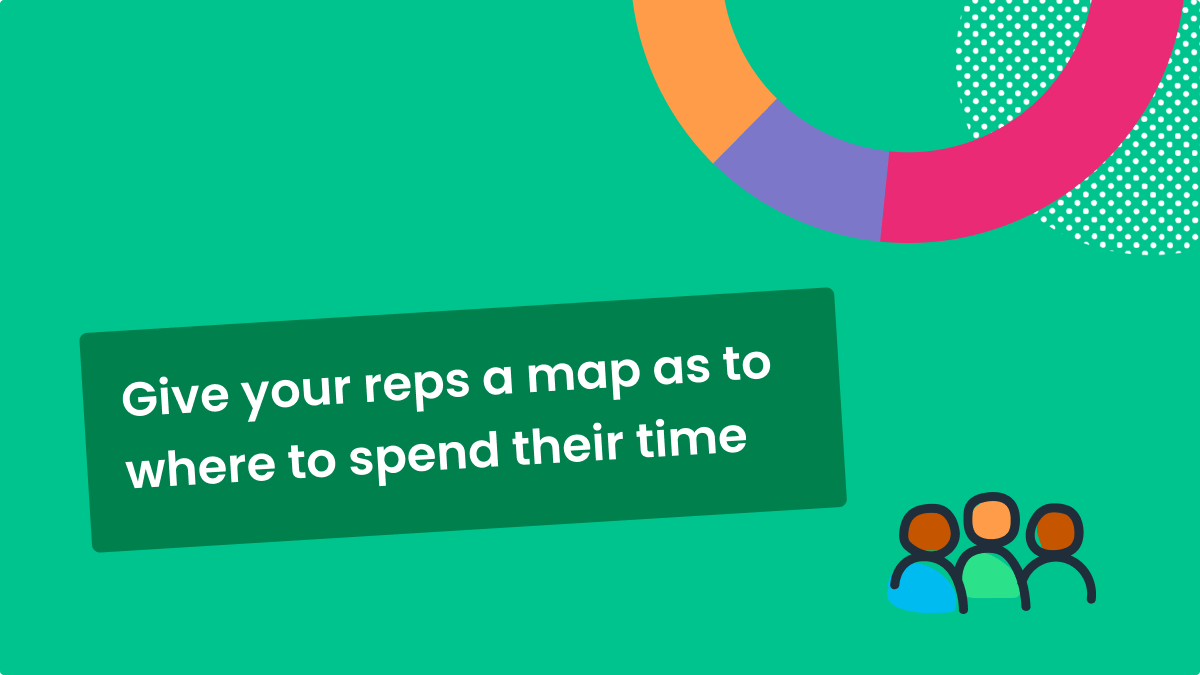How many of you have worked for a sales organization without an account scoring model in place?
It’s a challenge, right?
Your reps chase deals according to their intuition versus data. Which, don’t get us wrong, intuition is important, but it’s subjective. This can lead to reps and leadership overlooking some of the best accounts and spending too much time on the worst ones.
That’s where account scoring comes in.
Account scoring provides an objective view of accounts least and highest likely to close. This helps revenue teams focus their efforts and resources on accounts with the highest chance of success and avoid wasting time on those unlikely to.
If you’re serious about improving your sales results, it’s important to develop a sound account scoring model. To learn how to build one from scratch or improve your existing one, we turn to a leader who is proficient in account scoring, Gradient Works Head of Growth Lily Youn Jaroszewski.
Try QuotaPath for free
Try the most collaborative solution to manage, track and payout variable compensation. Calculate commissions and pay your team accurately, and on time.
Start TrialWhat is the account scoring system?
First, let’s define account scoring. Account scoring is a sales methodology that assigns a numerical value to each potential customer, based on their likelihood of becoming a paying customer.
The score combines account data, such as industry, size, and business model, as well as sales insights. It fluctuates according to the quality of the account as well as the engagement activity between the rep and prospect.
The closer the prospect is to meeting ideal customer profile (ICP) attributes, the higher the score.
Similarly, the more engagement between a rep and contacts and documented next steps, the greater the score.
Benefits of account scoring
When you adopt an account scoring system, you’re giving your reps a map as to where to spend their time. This is especially helpful when approaching the end of a quarter when leadership expects a final push to bring any lingering deals in.
Other benefits include:
- Increased revenue: By targeting the right accounts, sales teams can increase the amount of revenue they generate.
- Improved sales productivity: When focused on the accounts that are most likely to close, sales teams can be more productive and close more deals.
- Better use of resources: Your team will allocate resources to the accounts that are most likely to close so that they can make better use of their time and money.
- Increased customer satisfaction: By focusing on the accounts that are most valuable to your company, you can improve customer satisfaction and loyalty since they are the most likely to find value in your offering.
How to build account scoring models
If you’re building an account scoring model right now, or looking to revise your existing system, Lily, who built out Gradient Works’ model and helps their customers do so, has some advice.
First, map out a hypothesis.
“This is especially helpful if you don’t have any data yet,” Lily said. “For the few clients you have, what are the common themes? Do they break down by technographic? Data? Are they using specific tools that would be a good indicator that they’re a good fit for us?”
Look at company size. Would your solution actually fit?
What size companies would see the most value? Is it early-stage through Series D companies or does your solution primarily benefit enterprise organizations?
And, most importantly, host a leadership discussion between Sales, Marketing, and RevOps to address these questions.
Second, assign your score scale.
Once you have your “best fit” accounts or “ideal customer profile” (ICP), then you can begin tagging and scoring accounts appropriately in your CRM.
“I’ve done it before where we had a score method of zero to 100,” said Lily, whose scale at Gradient Works runs zero to 10.
It doesn’t totally matter what scaling system you go with, just make sure your leadership team is in agreement.
Then start attributing points.
For instance, if you have several healthcare clients, give healthcare accounts a point. If the account has more than 100 employees, give them another point. Maybe they use the CRM you integrate with — that’s another point.
“And then it just all adds up,” Lily said.
Third, evaluate.
To evaluate whether or not your account scoring model is successful, you can look at both the number of accounts returned for disqualification (more on that below) and the conversion rate of your scored accounts.
“A good conversion rate for mid-market sized teams is probably a 1 closed/won opportunity for every 15 accounts,” said Lily. “If you’re running very transactional sales with a majority of deals closing within one day, a 1:10 ratio is more appropriate.”
Create Compensation Plans with confidence
RevOps, sales leaders, and finance teams use our free tool to ensure reps’ on-target earnings and quotas line up with industry standards. Customize plans with accelerators, bonuses, and more, by adjusting 9 variables.
Build a Comp PlanAccount scoring best practices
Additionally, be sure to keep in mind Lily’s best practices for ongoing maintenance.
Distribute accounts as equitably as possible
“I think the most important part about looking into the validity of your account scoring model is to accurately track account distribution across your team,” Lily said.
This will allow you to ensure you’re evenly distributing your highest accounts across your team. Because if you don’t, not only will you frustrate your reps, but if your top performer receives only “10” accounts, it will skew data.
Give your reps the ability to mark accounts as “not qualified”
Moreover, you should give your reps the ability to mark certain accounts as “not a qualified account” while providing specifics. (You can use Gradient Works to do this directly in Salesforce).
“When your rep can mark that the organization is no longer in business, or maybe they’re not an ICP fit, your report becomes even more powerful,” said Lily.
For example, you distribute 100 accounts to the reps. Thirty accounts come back returned for disqualification because they aren’t an ICP fit due to company size. This will trigger your team to look into whether it’s a data issue or an issue with the original ICP hypotheses.
Monthly maintenance
Lily suggests looking at overall accounts worked on a monthly basis.
“If you’re more SMB, high-velocity sales, you can probably check in on it more often, because your reps are working through deals and accounts more quickly,” said Lily.
That means you’ll have data faster to support or disprove the hypotheses that informed your scoring and can adjust accordingly.
For those with larger teams and larger sales cycles, prioritize account scoring maintenance on a quarterly basis or before you head into the second half of the year.
Remember, “The conversation to change account scoring usually comes up when discussions about the next year’s territories come up,” Lily said.
Recognize that it’s not going to be right
“I think some people are so hung up on that your account scoring has to be right,” Lily said. “But there are so many factors that go into it. You just have to go with the data of who’s your current client and find clusters around common themes for each one to take an initial stab.”
Iterate multiple times on your account scoring system and keep track of everything.
“This is especially helpful when you launch into a new industry,” Lily said. “Run a test of the industry first with the existing score, then decide from there if you should increase the account score for the accounts within that industry.”
Create a feedback loop
Lastly, “Your reps need to have a channel to provide their feedback to leadership,” said Lily.
Whether that’s Slack, within the CRM (see: Gradient Works in Salesforce), or elsewhere, have a formal system in place to host feedback and “return” accounts.
At QuotaPath, for instance, we have a dedicated #ask_RevOps channel for raising issues with duplicate accounts or revised scoring.
***
Thank you, Lily, for your expertise in account scoring. To learn more about Gradient Works’ dynamic book management software, schedule time with their team.
And, experience QuotaPath’s sales comp software automation to run commissions for those accounts that convert to closed/won by signing up for a 30-day trial.



